Call the Synthbulance! Modular rig hits the road
We’re always hearing about an artist's ‘latest musical vehicle’ but here’s a synth duo that have taken the concept to the next level
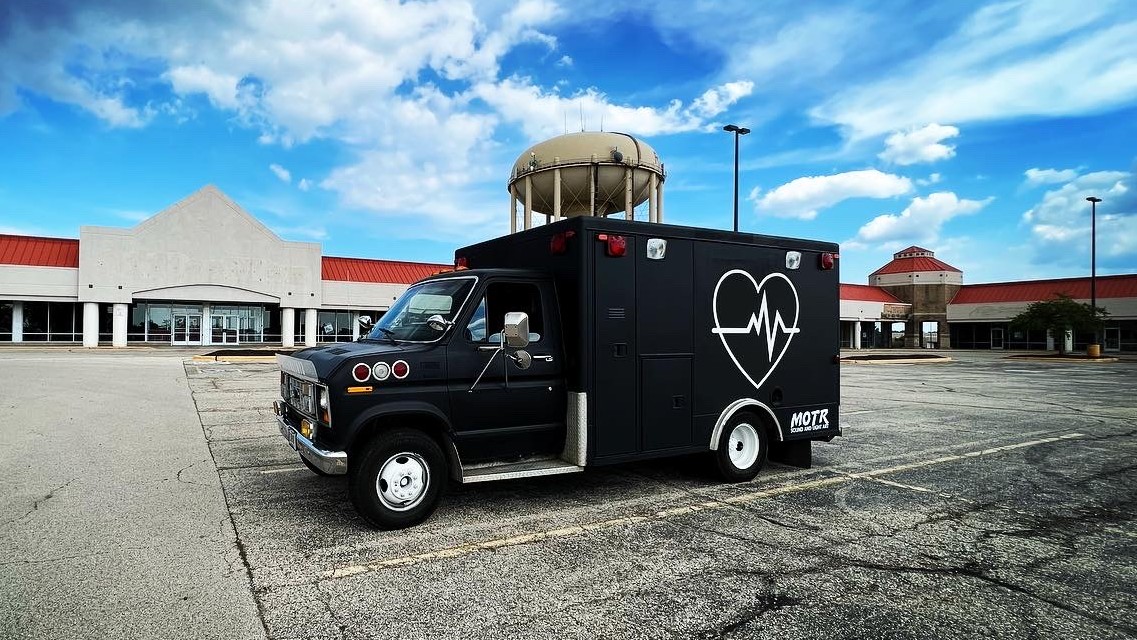
Meet the Synthbulance. A 1986 American ambulance packed out with banks of modular synthesizers, sensors and audio/visual performance tools, ready to roam Stateside electronic events putting on impromptu audio/visual experiences.
And meet its creators: “Z” Zetsumei (aka Nicholas Dye) and Flutter (aka Christine Ingaldson) whose Modular On The Road (MOTR) project is a living, breathing, rocking and rolling testament to their creativity and the ‘go-anywhere, do-anything’ culture that powers the modular synthesis movement.
We caught up with the crew at their base in Racine, Wisconsin to find out how this monster one-stop synth and AV performance machine came together. And just what’s in the box…
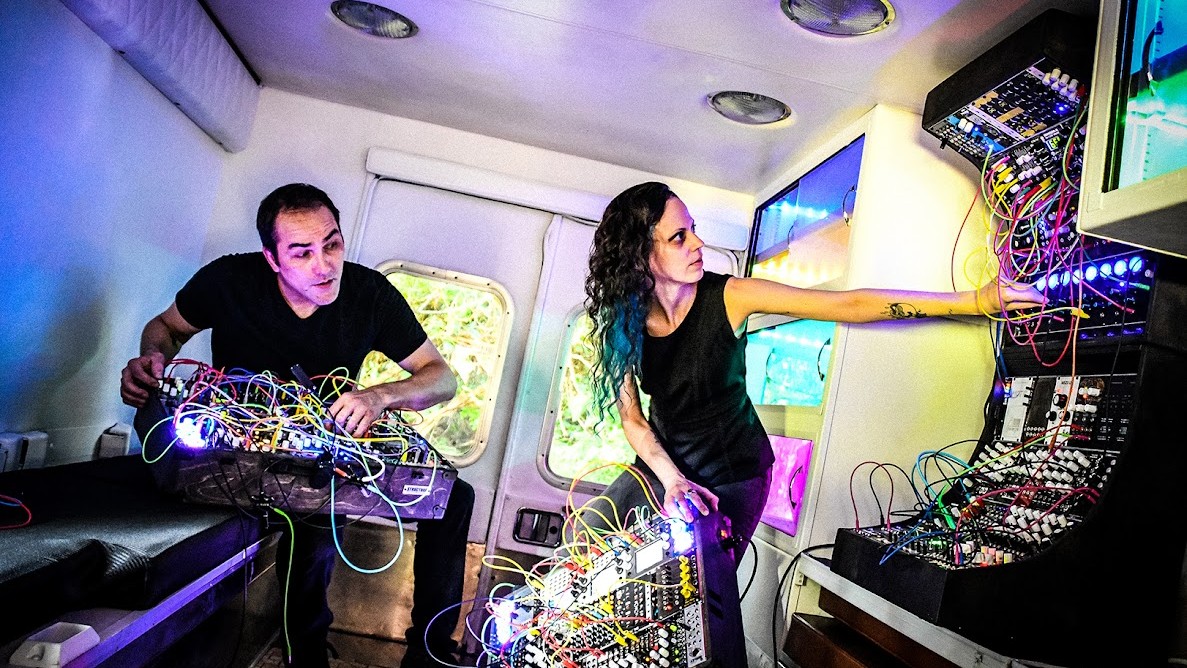
So what was the genesis of the Synthbulance? A mobile synth studio in an ambulance isn’t something you see every day.
I was browsing for deals on Facebook Marketplace and I stumbled upon an image of a black ambulance…
Z” Zetsumei (aka Nicholas Dye)
Nick: “In 2018, I needed a practical vehicle to drive back and forth to my job. The Kia Rio – kindly given to us by Christine's grandmother – had just broken down and I had a limited budget to find a quick replacement.
"I was browsing for deals on Facebook Marketplace and I stumbled upon an image of a black ambulance… I sent the listing to Christine, jokingly saying, "How about this for my new car?" and she responded, "That's badass! We could play shows out of it!"
How would you describe the Synthbulance?
Get the MusicRadar Newsletter
Want all the hottest music and gear news, reviews, deals, features and more, direct to your inbox? Sign up here.
Nick: “This is our vehicle for exploration, learning, experimentation, and most of all, fun. It’s our canvas for trying different things in the field of immersive and interactive experiences.
"We search for abandoned and neglected spaces and then transform those spaces with light and sound and when we’re working together things just evolve.”
Christine: “It’s very generative between me and Nick. Ideas start to get bigger and bigger as we work together and talk about the concepts behind it.”
Nick: Primarily this is for our amusement, but at the same time we want to find opportunities to share it with people, hopefully in some unexpected places.
Christine: We want to take our amusement and share our love for it with others.
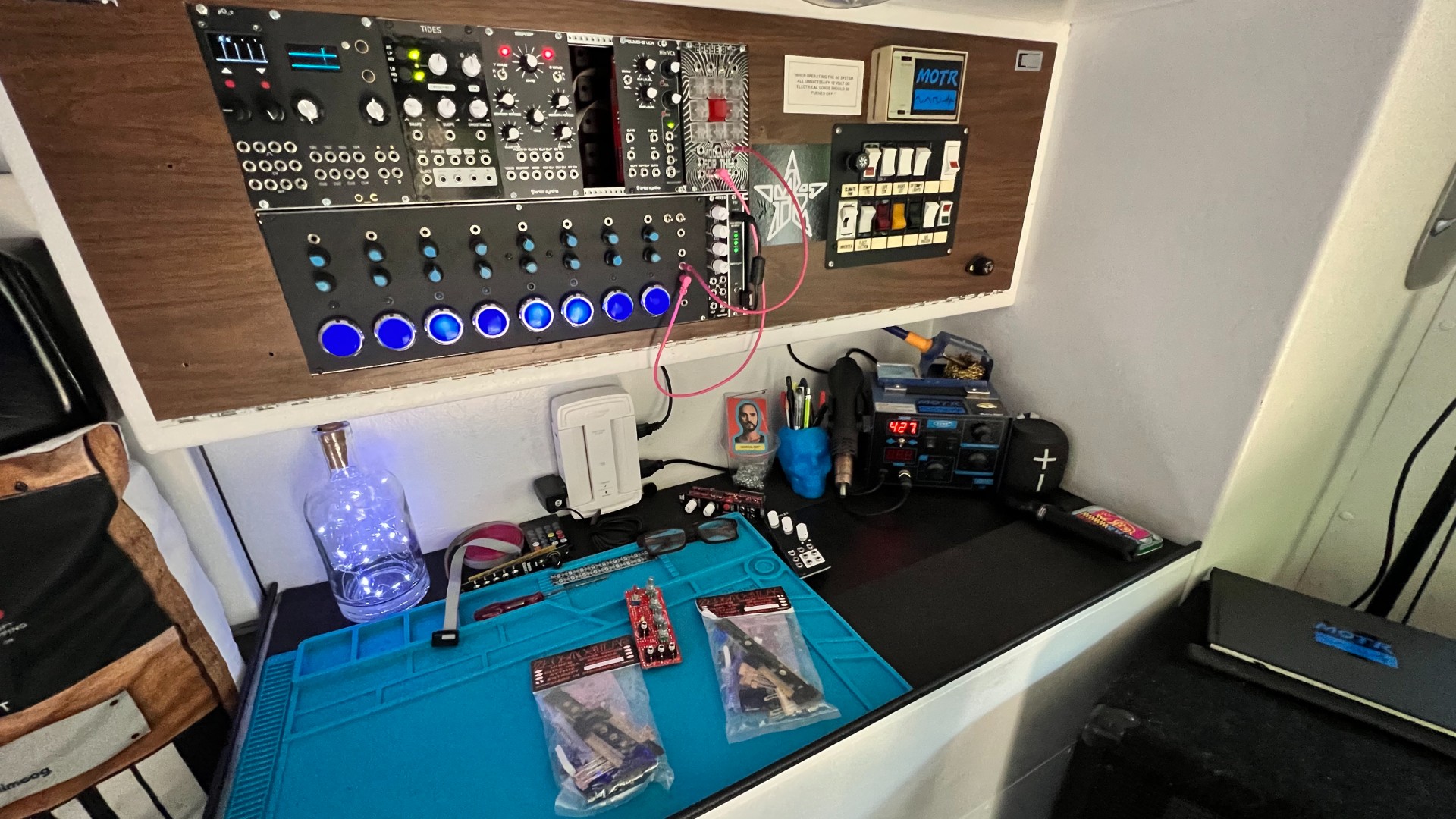
So is The Synthbulance your daily runabout?
Nick: “Sure. I use it to drive to the grocery store. When I stop at the gas station people come up to me and say ‘What is this thing?’ So I love that kind of intrigue and getting people curious so they come up and say ‘hello’”
So did you have a big home studio and you’ve moved that into the Synthbulance? Or is this all a self-contained project?
Nick: “A lot of the electronics building started about five years ago. We moved from Chicago to Racine and I had never been exposed to modular synthesizers before that. But we have this wonderful resource here Modular Addict and they were throwing a Synthfest that year and we both did a workshop. The first synthesizer we built five years ago was a Møffenzeef Mødular M.S.G which was a mini sound generator. And from that moment I was hooked.
Christine: “Both of us had been doing electronic things. Nick played the guitar too and I played piano but I was really an electronic musician with synthesizers. When I discovered modular I realised it was such a great way to experiment because I was always so experimental in my work.”
Nick: “Every time you patch them up you have a brand new instrument.”
So what’s at the heart of the Synthbulance set-up?
We saw the oil leaks, we saw the rusted-out panels but we could see what the machine wanted to become
Flutter (aka Christine Ingaldson)
Nick: “We use a MacBook Pro running Ableton Live 11 and TouchDesigner. Live 11 is used for capturing incoming audio signals and with the TDableton plugin we send track and MIDI data to TouchDesigner to create generative and audio reactive visuals. We use two video projectors that can be quickly re-positioned to cast onto walls or other surfaces outside and inside the Synthbulance.
“We add interactivity by capturing motion data from ourselves or the audience using a repurposed Xbox Kinect 2 motion sensor. The motion sensor can take body position readings using infrared sensors which is perfect for day or night motion detection. This information can be mapped to any of the parameters controlling the audio and visual elements.”
So how reliable is the truck? It looks immaculate inside and out.
Nick: “It’s a photogenic machine, sure! But I’m here every day so I see every little imperfection about it. But it’s the imperfections that give the machine its character.
Christine: “When we went to pick it up one of the people we were buying it from didn’t want us to see that it was leaking… They were trying to kick away the cardboard that had been collecting the oil, but we could see beyond it.
"We saw the oil leaks, we saw the rusted-out panels but we could see what the machine wanted to become.”
If you don’t mind me asking, what’s the going rate for a 1986 rusted out ambulance these days?
Nick: “We got the seller to drop the price by $1000 so we got the ambulance in running condition for $2500. But we’ve put a lot of work into it… Perhaps so much work that we could have bought a brand new ambulance!”
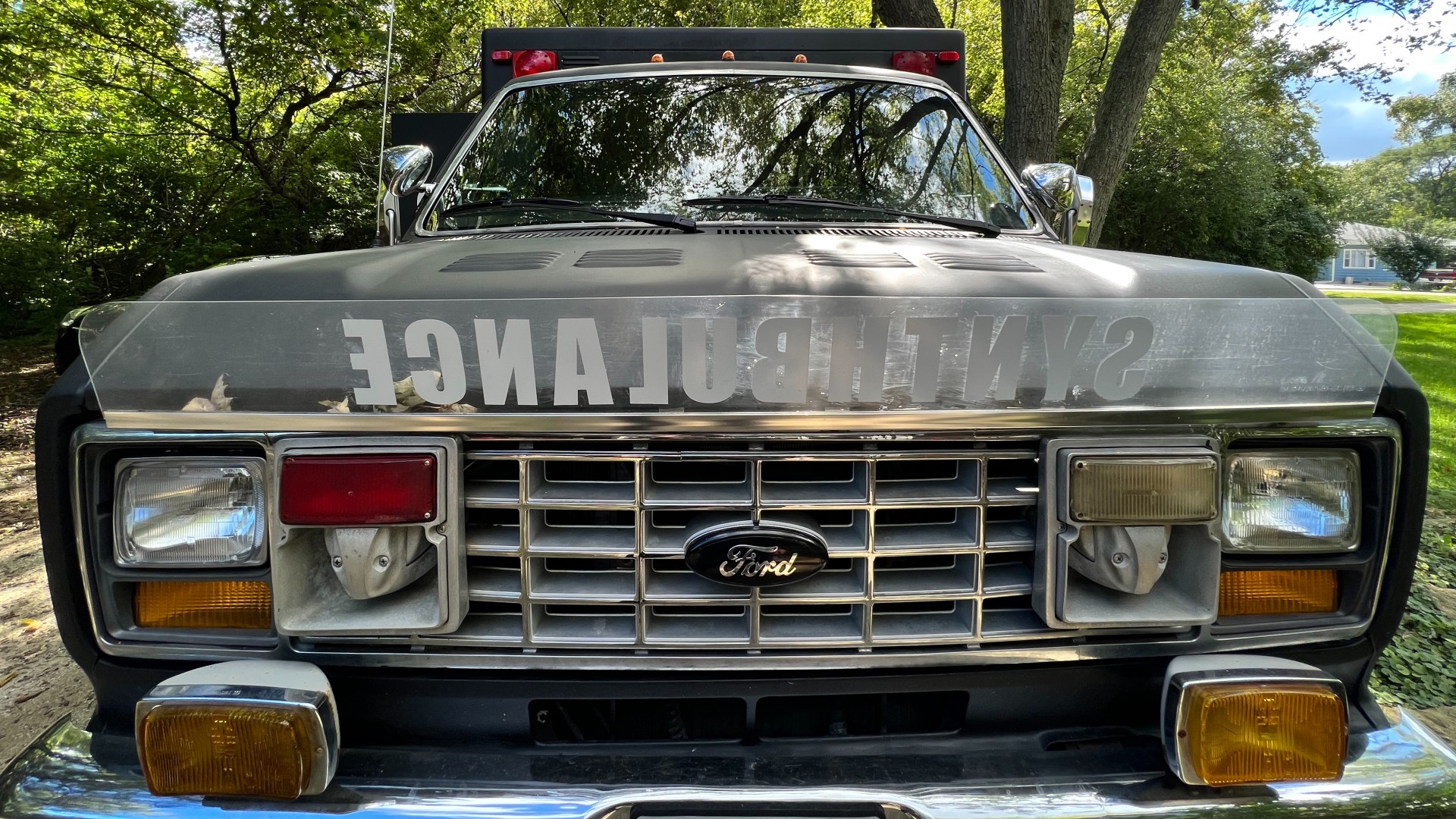
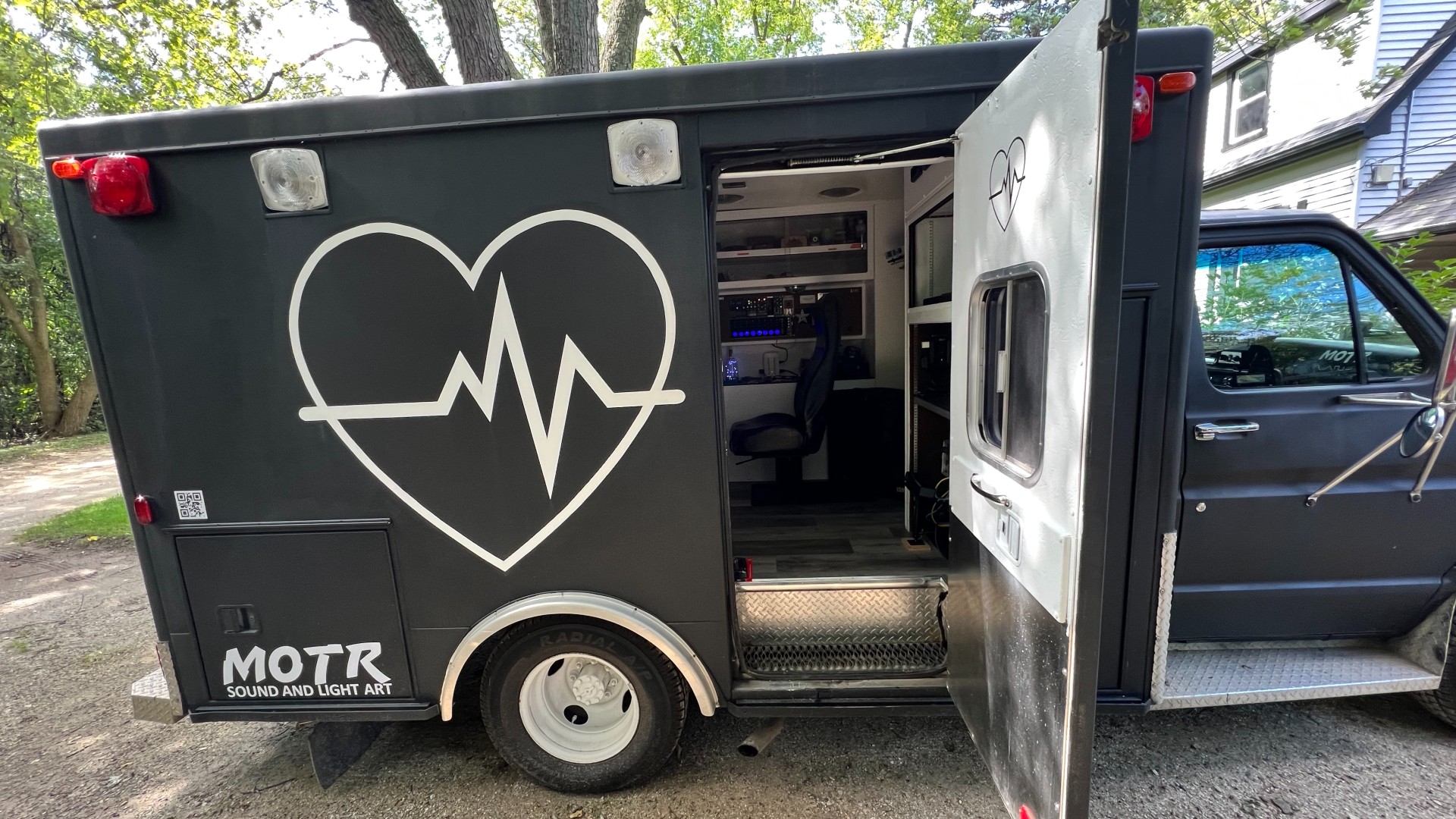
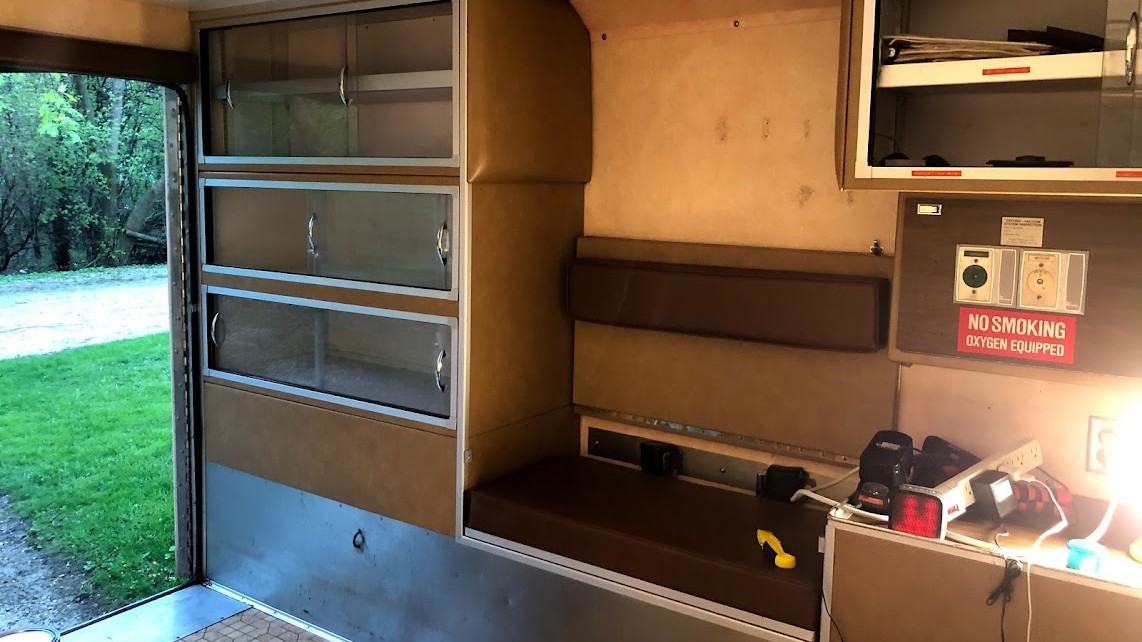
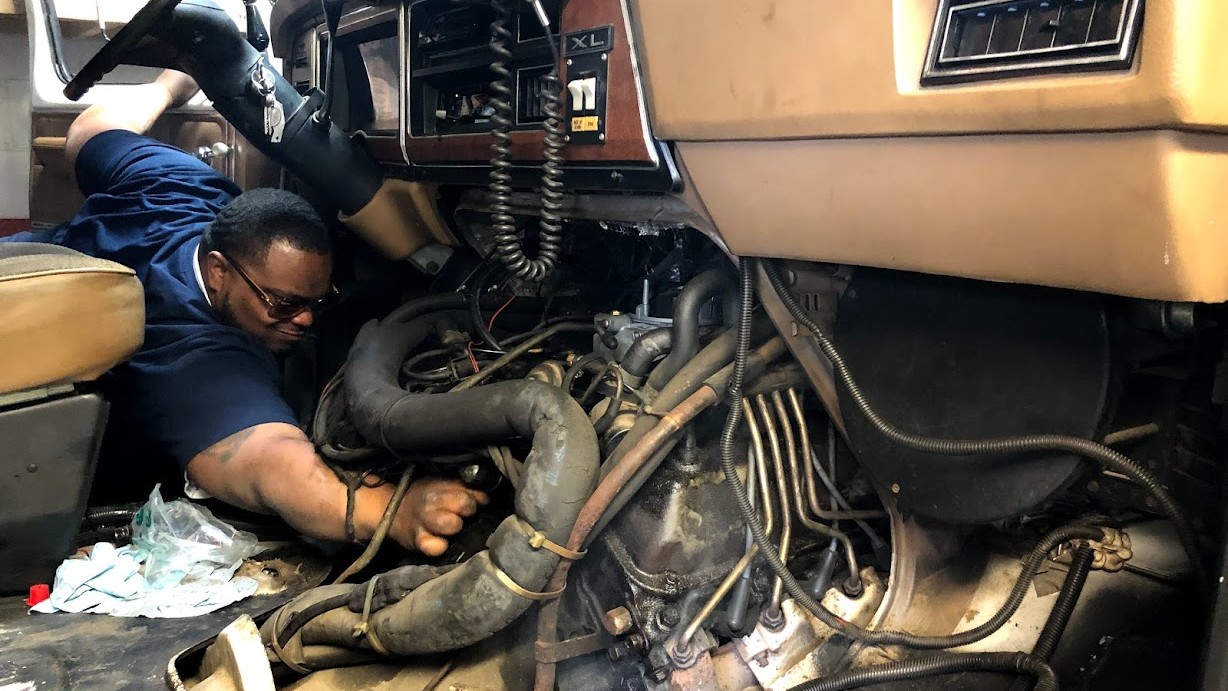

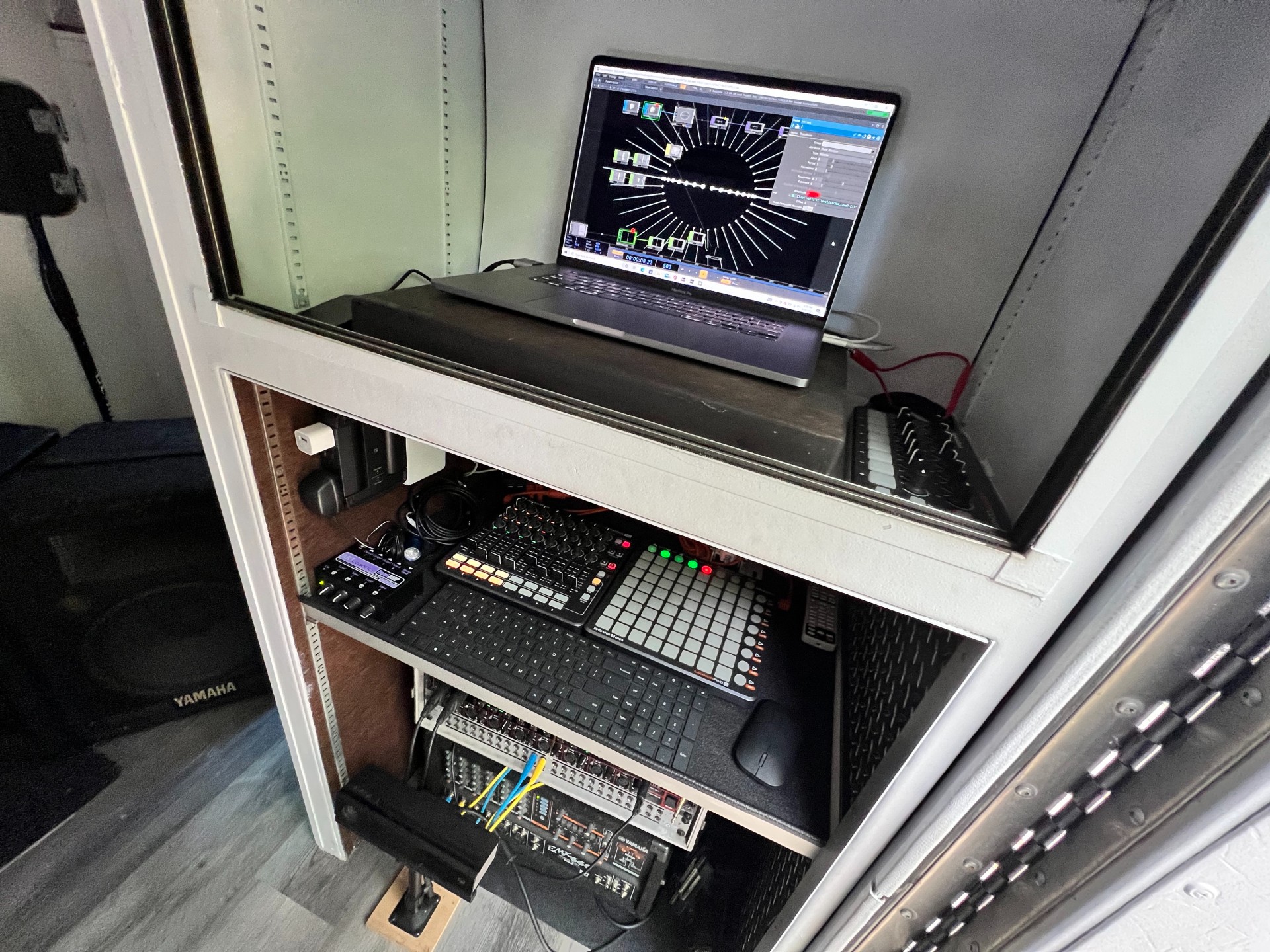
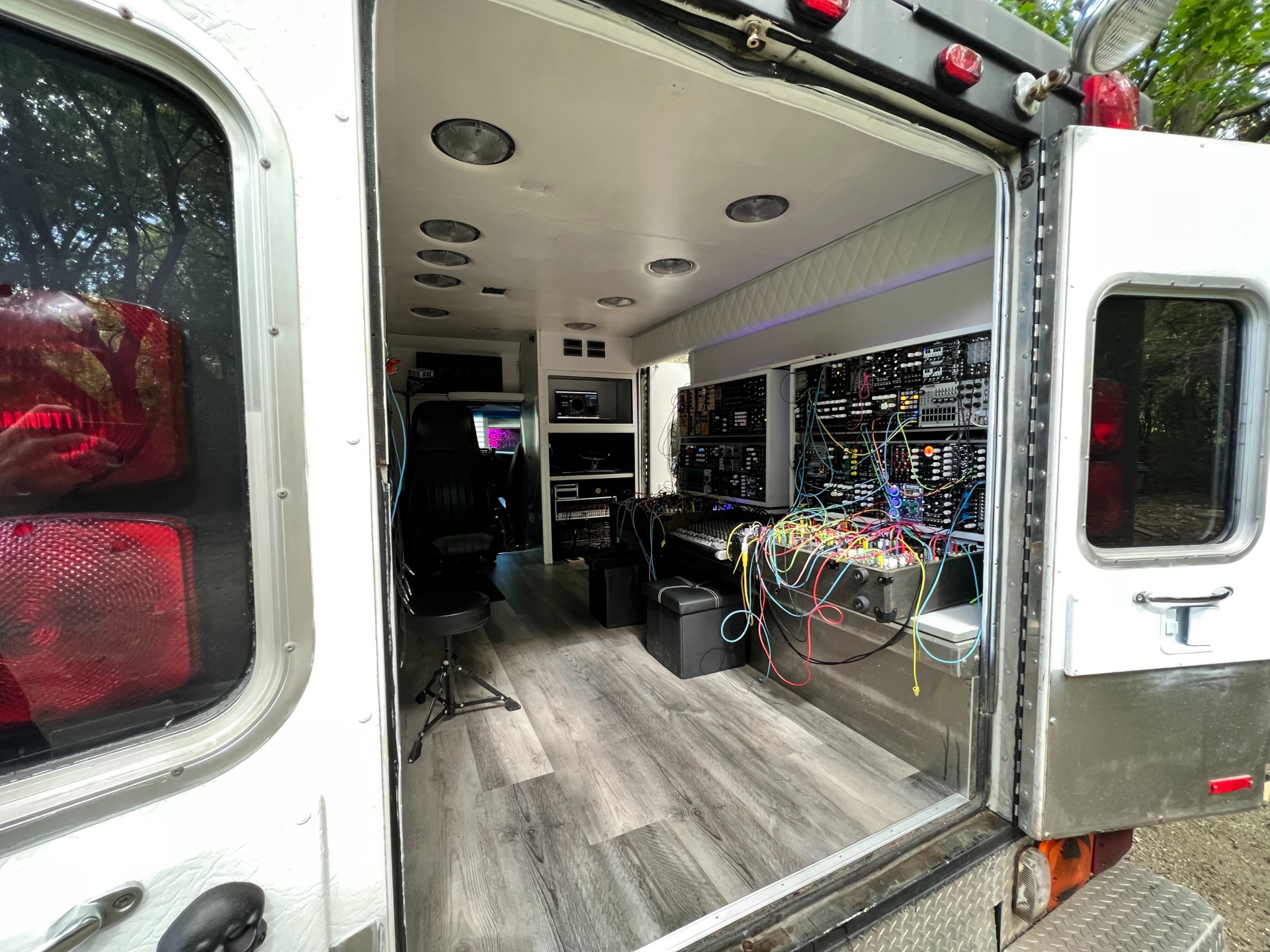

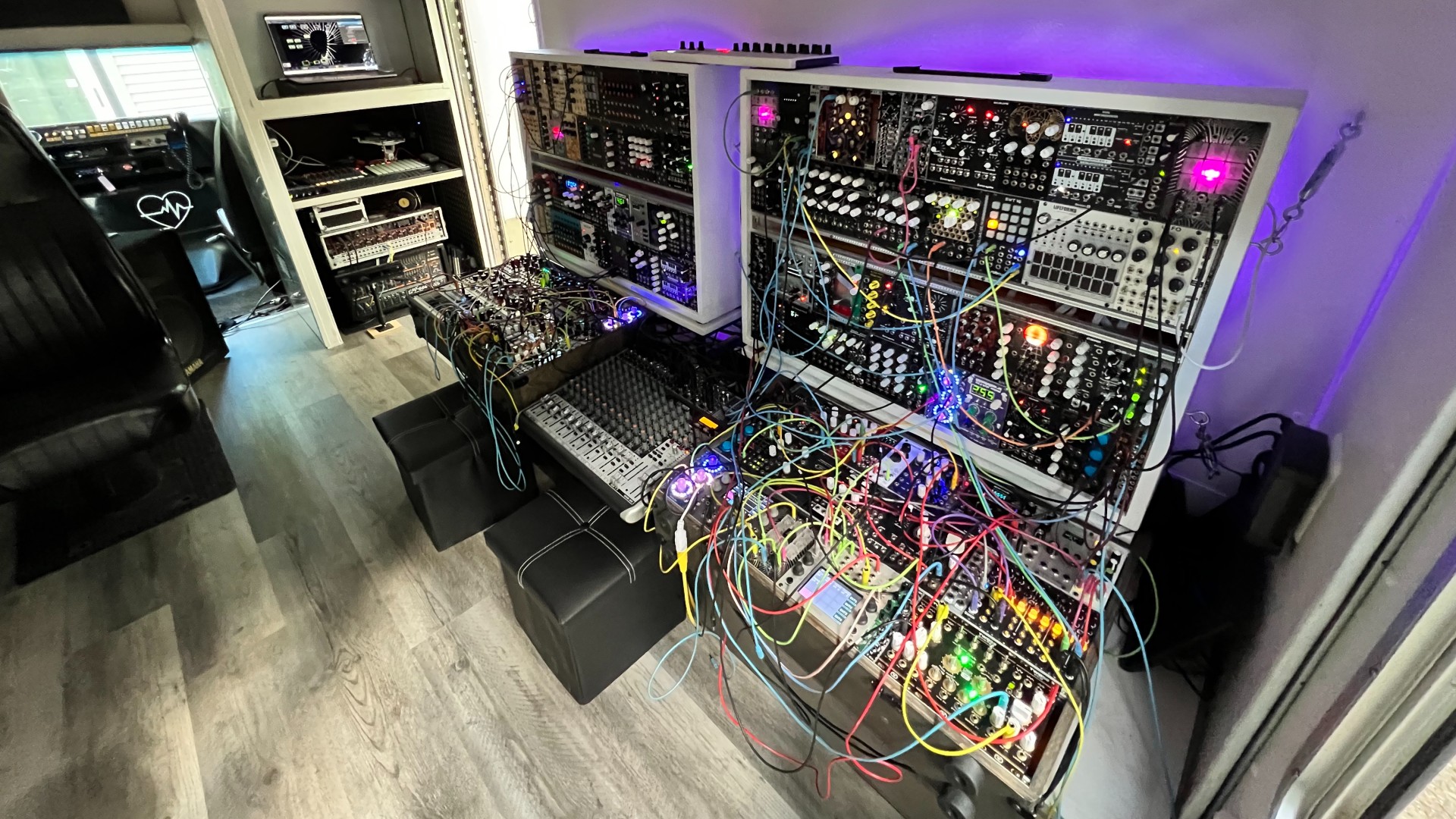
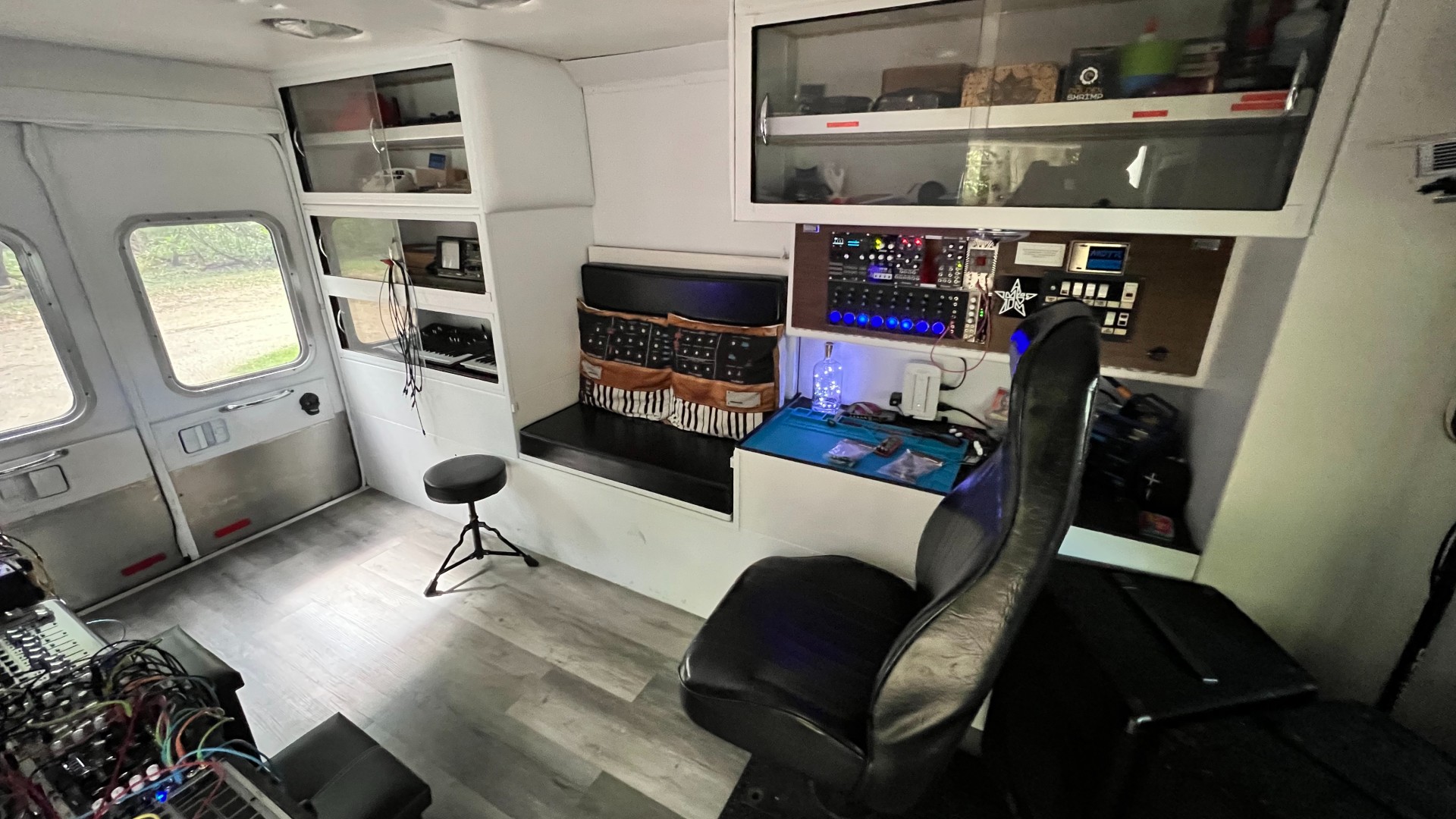
What needed fixing?
Nick: “The carburettor needed to be rebuilt. And when we’d had that done it was receiving too rich a fuel so I blew up the muffler twice… Then we finally found our mechanic, Nick Price, of Goodwheel in Racine, who was our saviour. He totally rebuilt our engine. Replaced the intake manifold, exhaust manifold, so the engine today is rock solid. Top-notch new.”
Did you get your hands dirty yourselves?
Nick: “Well, it came with the loudspeaker system – still works… The siren – still works. Everything was here, they just cut the wires. And it came with the entire build-binder from Road Rescue, the company that fitted all the features, with full schematics for all the wiring. So I’ve done everything cosmetic. The body work, the electricals. I guess it’s illegal to sell an emergency vehicle with the emergency features intact so I had to replace a lot.”
How do you power everything? Did the ambulance come with extra power for the gear on board?
Nick: “The vehicle has two batteries, sure, but I’ve kept them separate as we wanted a completely separate power system so we wouldn’t strand ourselves! We use a Jackery 1000W lithium-ion rechargeable battery to power the equipment. All the modular, our mixer, my soundcard and the PA. It’ll power it for about four and a half hours.”
Christine: “So enough time for set-up, then a set of around two hours. We also do light projection and audio reactivity so running two projectors dropped that four hours down to two hours. So we’d like to upgrade the power. We did have a 2000W gas generator but it was loud… And made fumes… With a rechargeable battery we can go anywhere and nobody is going to ask us why we have a generator running!”
Do you have plenty of opportunities to hit the road and play out?
Nick: “Yeah, sure. We have a regular synth meet up at Golf Shoe Music in their state-of-the-art recording studio in Milwaukee, run by RJ Mann who’s a super-solid dude. And every month or two we have a meet up on a Sunday where people can come and nerd out and see where we’re at. We have Ableton Live meet ups and recently there was Knobcon in the midwest too.

What’s your favourite piece of kit in there?
Nick: “I’m super partial to Korg synthesizers. I’m so in love with the Korg Monologue that I have two of them and I have the Korg Minilogue there too.
Christine: “My favourites are Qu-Bit. Almost this entire row is Qu-Bit. My favourite modules are the Qu-bit Nebulae V2 and Aurora as well as the Pittsburgh Modular Lifeforms SV-1 and KB-1 combo. The SV-1 has such a nice sound. And then there’s the Easy Ei8ht.”
Nick: “It’s a live trigger sequencer that was designed by my friend Juanito Moore at Modular For The Masses. He’s ‘the tin can synth man’ with his own system all built into tin cans! When I first started out in modular I was drinking it up. Youtubers like Simon The Magpie… Look Mom No Computer has been a huge influence and then there’s Juanito Moore. He designs all his circuits point to point. He doesn’t use PCBs. He was getting into modular synthesis without even knowing what Eurorack was.
“We became friends by taking one of his tin can designs and making a Eurorack module out of it and that became the Easy Ei8ht. You play it and it remembers the steps and then you can glitch it out on the fly and mute tracks. It’s a really fun modular to play with. We did a build workshop at Knobcon with that module and it was really fun. There’s maybe only about 50 in the world.”
What else is in there?
Nick: “There’s 2000hp of Eurorack modules combined in four cases so far and there's plenty more modules that have not made it into a case yet! This thing is perpetually growing. In the big 640hp cases mounted to the wall, we have mostly all DIY modules. from Barton Music Circuits and Mutable Instruments as well as kit modules from Befaco and Zlob Modular. In my 360 case I have more various DIY modules with the main brain section of my rig including 1010music Bitbox, Toolbox and the Polyend Poly 2.”
Christine: “Together we use several Ornament and Crime modules patched and triggered by the EasyEi8ht. We also use the Beatstep Pro primarily as a utility to sync all our clocks while having the ability to accept a master clock from a variety of different sources. This makes it very easy for us to sync with any artists that we invite to go for a ride and jam session.”
And what ISN’T in the racks?
Nick: “There’s the Korgs and we also use a Boss RC505 for live-looping other noise makers and vocals. All of this is mixed on the Behringer Xenyx 2222 mixer and sent to the Focusrite Scarlett 18i20 audio interface. We also use an old Yamaha PA system that we are aiming to upgrade to something smaller and less power-hungry.”
What are your plans for the future?
Nick: “We’re going to be installing additional sensors to the vehicle to capture diagnostic data for controlling more of the light and audio. A silly dream of ours is to have the Synthbulance play itself when we are driving and things like speed and direction can drive the music that is created.”
Christine: “We’re also working to evolve the immersive features of the Synthbulance so that any spectators could instantly be the performers. It's almost off-season for us with the winter months ahead and this is when most of our development work takes place.”
So if people wanted to come and see the Synthbulance where could they catch up with you?
Christine: “You should sign up for our newsletter on our website but our Instagram page is where a lot of information goes too.”
• Check out the duo’s Zetsumetsu website here
• See the Synthbulance in action on their YouTube channel here
• Keep an eye on their Instagram here
•And listen to Zetsumetsu music here
Daniel Griffiths is a veteran journalist who has worked on some of the biggest entertainment, tech and home brands in the world. He's interviewed countless big names, and covered countless new releases in the fields of music, videogames, movies, tech, gadgets, home improvement, self build, interiors and garden design. He’s the ex-Editor of Future Music and ex-Group Editor-in-Chief of Electronic Musician, Guitarist, Guitar World, Computer Music and more. He renovates property and writes for MusicRadar.com.










